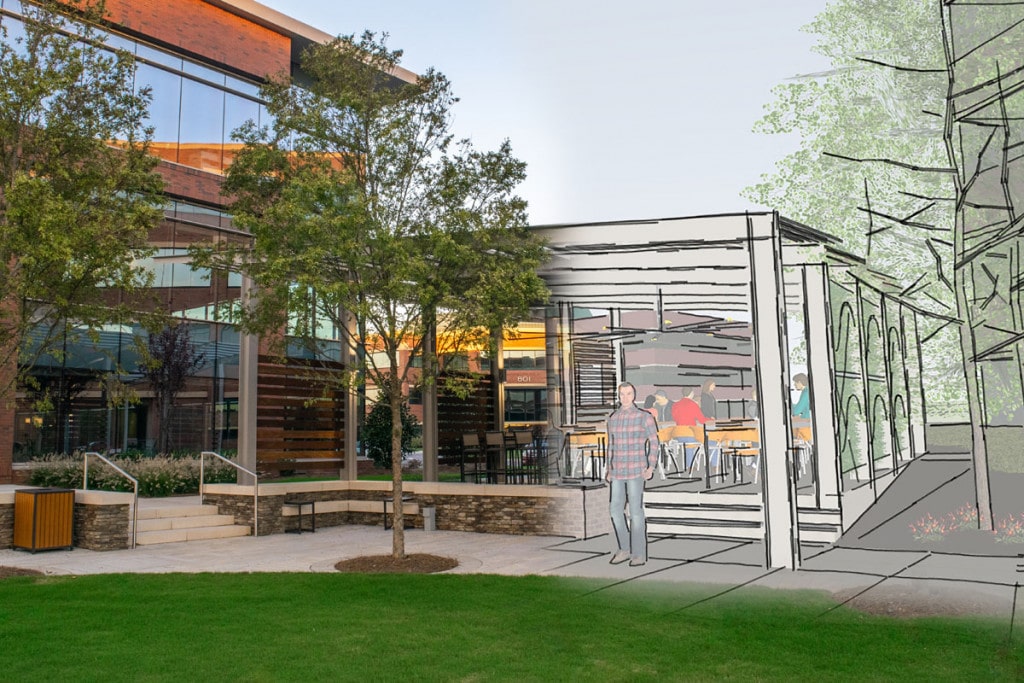How CDA Architects Deliver Cutting-Edge Solutions for Lasting Style
How CDA Architects Deliver Cutting-Edge Solutions for Lasting Style
Blog Article
Comprehending the Collaborative Process In Between Architects and Designers in Modern Building Projects
The joint procedure in between engineers and designers is essential in contemporary building tasks, as it balances layout intent with engineering usefulness. Checking out these dynamics discloses insights that might dramatically affect job end results and general sector standards.
The Value of Partnership
The collaborative synergy in between architects and engineers is necessary for the successful awareness of any type of construction project. This partnership brings with each other distinct expertise and perspectives, allowing the assimilation of cutting-edge design with useful design remedies. By interacting, architects and engineers can guarantee that a job not just fulfills visual and functional requirements but likewise abides by security, sustainability, and financial restraints.
Cooperation fosters a shared vision, facilitating the positioning of goals and expectations from the outset. This positioning is important in attending to potential difficulties and mitigating dangers that might develop during the job lifecycle. Additionally, a collective method enables the efficient allotment of resources, optimizing both time and cost.
The significance of partnership extends to the iterative process of style and construction, where responses from designers can inform architectural decisions, leading to more viable and sustainable styles. Conversely, architects can inspire designers to believe artistically concerning exactly how to accomplish structural integrity without endangering creative intent. Ultimately, the joint connection between architects and engineers is not merely useful; it is fundamental to the development of high-grade, useful, and innovative developed environments that fulfill the needs of culture.
Interaction Methods and Devices
Efficient interaction techniques and tools are essential for fostering partnership in between designers and engineers throughout the task lifecycle. Developing clear networks of communication is vital to ensure that all group participants are lined up with job purposes, timelines, and obligations. Normal meetings, both in-person and virtual, provide possibilities for stakeholders to go over development, address issues, and make informed decisions.
Utilizing job management software program, such as BIM (Building Details Modeling) platforms, boosts cooperation by enabling real-time sharing of style modifications and technical requirements. These tools facilitate transparency, permitting engineers and designers to imagine adjustments and evaluate their influence on the general job.

Shared Goals and Task Vision

Establishing shared objectives entails open dialogue and a complete understanding of each self-control's payments. Designers normally why not find out more concentrate on design intent, spatial connections, and individual experience, while designers stress structural honesty, systems capability, and conformity with guidelines (cda architects). When these viewpoints are aligned, the outcome is a natural job that sticks to both imaginative goals and technological expediency
Furthermore, a well-defined job vision promotes liability amongst employee, motivating each individual to take possession of their duty in achieving the preferred outcome. Normal check-ins and collective workshops can additionally enhance this dedication, permitting changes to be made as the job develops. Ultimately, a shared vision not only improves team effort yet additionally elevates the quality of the last deliverable, causing effective job conclusion.
The Function of Modern Technology
Leveraging modern technology has ended up being crucial in enhancing partnership in between architects and engineers. Building Details Modeling (BIM) stands out as a pivotal technology, enabling both navigate to these guys engineers and designers to develop comprehensive 3D designs that envelop layout intent and architectural integrity.
Furthermore, cloud-based platforms allow smooth cooperation, permitting task stakeholders to access and update job data from anywhere. This promotes a society of openness and liability, as adjustments can be tracked and assessed in real-time. Additionally, mobile applications further enhance communication, providing on-site teams with immediate access to project specifications and updates.
Emerging technologies such as expert system and machine knowing are also beginning to contribute in predictive analysis, assisting groups determine potential problems prior to they develop. Inevitably, the role of modern technology in architecture-engineering partnership not just improves operations performances yet likewise improves development, resulting in more effective job results. By embracing these technical innovations, designers and engineers can ensure an extra natural and efficient collaborative procedure throughout the building and construction lifecycle.
Study in Effective Collaborations
Various case researches show the extensive effect of effective collaborations between engineers and designers on project end results. One noteworthy instance is the partnership on the High Line in New York City, where landscape designers, engineers, and city planners collaborated to change an abandoned railway into a vivid public park. This multidisciplinary method not just improved the visual high quality yet likewise made certain structural safety here are the findings and security and environmental sustainability.
An additional exemplary situation is the design and building of the Sydney Opera House. The partnership in between architect JÃ ¸ registered nurse Utzon and architectural engineer Ove Arup exhibited innovative analytical. Their collaboration enabled the legendary shell-like design while attending to complex engineering challenges, eventually bring about a timeless architectural work of art.
The Burj Khalifa in Dubai further demonstrates the relevance of joint efforts. cda architects. The combination of design and design competence made it possible for the project team to accomplish unmatched elevations while sticking to safety policies and aesthetic vision
These instances highlight the value of interaction, trust fund, and shared objectives. In today's complex construction atmosphere, such partnerships are necessary to browsing challenges and delivering projects that meet both practical and visionary goals.
Final Thought
To conclude, the partnership in between engineers and designers is crucial for the success of modern-day building and construction projects. Reliable interaction strategies, a common task vision, and the assimilation of advanced modern technologies are important parts that promote this partnership. By fostering a culture of accountability and leveraging devices such as Structure Info Modeling (BIM), teams can navigate project complexities, ensuring that visual, useful, and sustainability goals are attained. Ultimately, this harmony causes cutting-edge and effective project results.
Report this page